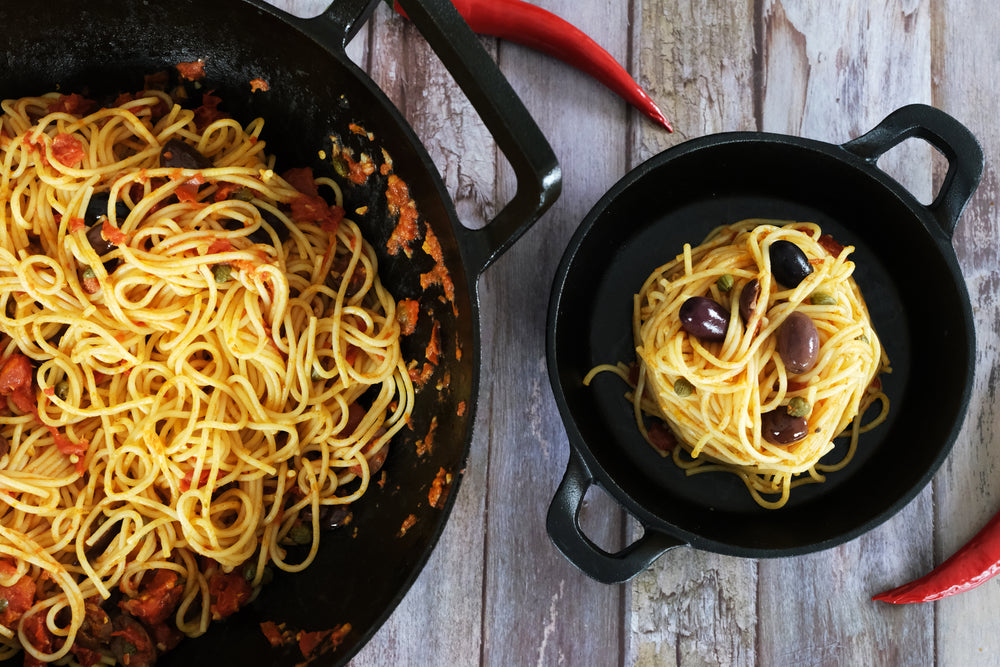Bolognese'yi Anlamak: İtalya'nın Ünlü Et Sosunun Zengin Tarihi ve Gerçek Tanımı

Bolognese, "pasta Bolognese"de olduğu gibi, İtalya'nın Emilia-Romagna bölgesindeki Bologna şehrinden kaynaklanan zengin, doyurucu et bazlı bir sosu ifade eder. İşte tanımı ve kökeni hakkında ayrıntılı bir açıklama:
Tanım
Bolognese sosu (İtalyanca: ragù alla bolognese), genellikle makarna ile servis edilen geleneksel bir İtalyan et sosudur. Klasik Bolognese sosunun temel özellikleri şunlardır:
- Malzemeler: Kıyma (genellikle sığır ve domuz karışımı), soffritto (ince doğranmış soğan, havuç ve kereviz karışımı), domates veya domates salçası, süt veya krema, şarap (beyaz veya kırmızı) ve bazen pancetta (İtalyan pastırması).
- Hazırlık: Sos, tatların birbirine karışması ve etin yumuşaması için birkaç saat boyunca yavaşça pişirilir. Genellikle kalın, doyurucu bir kıvama ulaşana kadar kaynatılır.
- Servis: Geleneksel olarak, Bolognese sosu spagetti yerine tagliatelle (şerit şeklinde bir makarna türü) ile servis edilir. Ayrıca, beşamel sosu ve makarna katmanları ile yapılan lasagna alla Bolognese'de de kullanılır.
Köken
Bolognese sosunun kökeni İtalya'nın Bologna şehrine dayanır. İşte tarihçesi ve gelişimi hakkında bazı önemli noktalar:
- Tarihi Tarifler: Modern Bolognese sosuna benzeyen et sosu için en erken belgelenmiş tarif 18. yüzyıla aittir. Ancak, bugün bildiğimiz klasik tarif, İtalyan iş insanı ve yazar Pellegrino Artusi tarafından 1891'de yayımlanan "La Scienza in Cucina e l'Arte di Mangiar Bene" (Mutfakta Bilim ve İyi Yemek Sanatı) adlı yemek kitabında resmi olarak belgelenmiştir.
- Geleneksel Yöntemler: Bolognese yapımının geleneksel yöntemi, tatların tam olarak gelişmesini sağlayan yavaş pişirme sürecini içerir. Bu yöntem, yerel malzemelerin ve Emilia-Romagna bölgesinin mutfak tekniklerinin kullanımını vurgular.
- Modern Varyasyonlar: Zamanla, Bolognese sosu farklı tatlara ve tercihlere uyacak şekilde evrilmiş ve uyarlanmıştır. Temel malzemeler aynı kalmakla birlikte, tarifte bölgesel ve kişisel tercihlerden etkilenen varyasyonlar mevcuttur.
Küresel Etki
Bolognese sosu, İtalyan mutfağının temel bir parçası haline gelmiş ve uluslararası popülerlik kazanmıştır. İtalya dışında genellikle "spagetti Bolognese" olarak adlandırılır, ancak İtalya'da daha çok tagliatelle ile birlikte servis edilir. Küresel versiyon genellikle sarımsak ve otlar gibi geleneksel İtalyan tarifinde olmayan ek malzemeler içerir.
Özetle, Bolognese sosu, İtalya'nın Bologna şehrinden gelen zengin, yavaş pişirilmiş bir et sosudur ve geleneksel olarak tagliatelle makarnası ile servis edilir. Zengin tarihi ve geleneksel hazırlama yöntemleri, onu hem İtalya'da hem de dünya çapında sevilen bir yemek haline getirmiştir.
Bu Bir Sos mu Yoksa Ragù mu?
Bolognese sosu genellikle et bazlı bir sos anlamına gelen ragù olarak adlandırılır. Özellikle ragù alla Bolognese olarak bilinir.
Terimlerin Açıklanması
-
Sos:
- Genel Tanım: Sos, yiyeceğe nem ve lezzet katmak için servis edilen sıvı veya yarı sıvı bir maddedir.
- Bolognese Bağlamı: Geniş anlamda, Bolognese bir sos olarak kabul edilebilir çünkü makarnayı nemlendirir, lezzet ve zenginlik katar.
-
Ragù:
- Özel Tanım: İtalyan mutfağında ragù, genellikle yavaş pişirilen ve makarna ile servis edilen et bazlı bir sostur. İtalya genelinde birçok ragù çeşidi vardır ve ragù alla Bolognese en ünlülerindendir.
- Bolognese Bağlamı: Bolognese, bir ragù türüdür. Kıyma veya kıyılmış etin soffritto (ince doğranmış soğan, havuç ve kereviz karışımı), domates veya domates salçası, şarap ve bazen süt veya krema ile yavaş pişirilmesini içerir. Yavaş pişirme süreci ve etin ana malzeme olarak kullanılması onu ragù olarak sınıflandırır.
Sonuç
Bolognese genellikle bir sos olarak anılsa da, aslında daha doğru tanımı bir ragùdur. İtalya'da ragù alla Bolognese terimi özellikle Bologna'dan gelen bu et bazlı sosu ifade eder. Yani genel mutfak anlamında bir sos olsa da, özel sınıflandırması bir ragùdur.















Yorum bırak